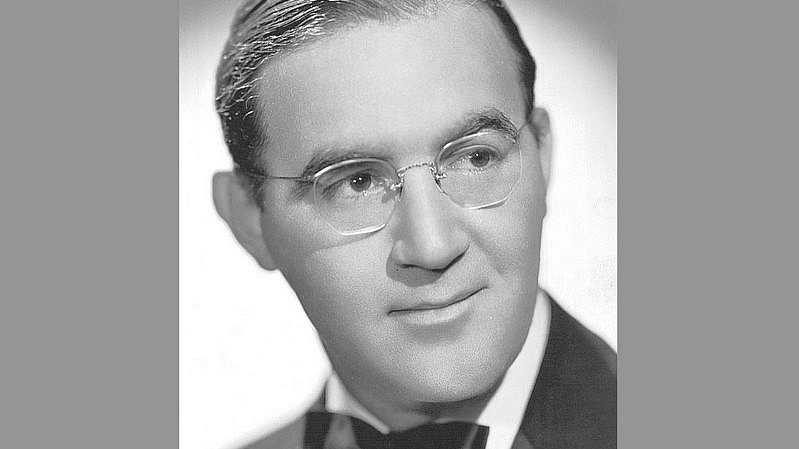When Jazz Was King. Serious and non-serious stories about the history of jazz
Latvian Radio episodes about the most notable musicians in the history of jazz.
–
–
Benny or Benjamin was born in Chicago in 1909 in the family of Jewish immigrants David Goodman and Dora Rezinska, who hoped to find refuge in the new world from the Jewish riots that became fashionable in Tsarist Russia.
If not better, then at least in a different way – the Maxwell Street ghetto in Chicago, where the Goodman family settled, surely took the first place among the poorest districts of the city. The sidewalks are dirty, the houses run down, the only pleasure is watching the endless clashes of street gangs. If in Russia Goodman Sr. could earn a living as a tailor, then here he had to settle for work in a slaughterhouse. Money was always not enough. 12 children were forever hungry and frozen. Some of the neighbors had come up with an interesting solution – you can always make money with music, and that’s it
At the age of 10, Benny first picked up the elegant instrument – the clarinet – and was accepted into the orchestra of the local synagogue together with two other brothers.
Soon he was already playing better than any member of the collective, but oh well! – the synagogue also no longer had enough funds to maintain the orchestra. It’s nothing – David Goodman was sure of his son’s musical future and tried to save 50 cents every week, which were paid for two years for private lessons to the classically educated pedagogue Frans Shep. Not only Shep’s instructions proved useful, but also new acquaintances – here Benny played music with Buster Bailey, who later played with Lewis Armstrong.
In the 1920s, Chicago was one of the centers of the development of the new – jazz – music. It would be strange if the young Benny Goodman wasn’t captivated by these ubiquitous sounds.
At the age of 12, Benjamin performed for the first time professionally at the Central Park Theater impersonating the then popular clarinetist Teddy Louis. After another two years, he left school, devoting all his time only to music.
If you learned how to play jazz and were able to improvise, you could find a job in a dance orchestra without any problems. Soon the young Goodman was already receiving 15 dollars for one evening – more than the senior earned in a week.
In August 1925, Benny Goodman joined Ben Pollack’s orchestra and toured with it from California to New York. The first sound recordings were also made in this orchestra. Another four years, and now Goodman is anchored in New York as a solo artist, with his whole family. He was a sought-after guest in recording studios, radio stations and Broadway musical ensembles. Successful recordings with Jack Teegarden, Billie Holiday and Mildred Bailey, as well as an invitation to perform at the Billy Rose Music Hall, made Benny think about forming a permanent line-up. Said – done. On June 1, 1934, the newly formed 12-member orchestra gave its first concert. A year later – a national tour, which was not really successful until the musicians reached Los Angeles.
Along with the phenomenally successful performance of the Benny Goodman Orchestra on the evening of August 21, 1935, this date is considered the beginning of the swing era.
In the 1930s, the famous Benny Goodman Trio was also founded with drummer Gene Krupa and pianist Teddy Wilson, who were soon joined by vibraphonist Lionel Hampton. It was in the chamber composition that Goodman’s talents as a soloist and improviser could be best expressed.
Already at this time, Benny Goodman proved himself in a completely different role.
He became the first great jazz musician to succeed in the field of classical music.
First, already in 1935, Mozart’s quintet for clarinet and string quartet was played to a requested audience. After several years, works by Bartok, Copland and Hindemith also appeared in the repertoire, followed by performances with leading American orchestras, playing and also recording works by Bernstein, Debussy, Poulenc, Stravinsky and many other composers for clarinet.
In 1939, several leading soloists left Goodman’s big band – percussionist Gene Krupa and trumpeter Harry James. They wanted to start their own orchestras. In July 1940, due to illness, Benny Goodman was forced to put his orchestra players on leave. In October of the same year, the group of musicians had changed a lot and the sound was also different.
In 1947, Benny Goodman made the last reorganization of his orchestra – the bebop style came into fashion. Although Goodman highly valued the playing style and technical ability of bop musicians, he continued to play music in the old, tried and tested swing manner. But already in 1949, this “band” model was also dissolved – from now on, he no longer had his own permanent line-up of musicians.
Starting from the 1950s, the emphasis was placed on concert activities mostly across the ocean – regularly at least half of the days of the year were spent in Europe, the Middle and Far East, and also in South America.
Benny still felt most comfortable playing in small ensembles, although a group of ten musicians was also assembled for individual events. This continued until 1986, when at the age of 77, the king of swing’s heart failed. But even today, the sweetest praise for any clarinetist is the words – “you already play like Benny Goodman!”
When Jazz Was King
–
Highlight the text and press Ctrl+Enterto send the text fragment to be corrected to the editor!
Highlight the text and press on Report a bug buttons to send the text fragment to be corrected to the editor!
–
–


